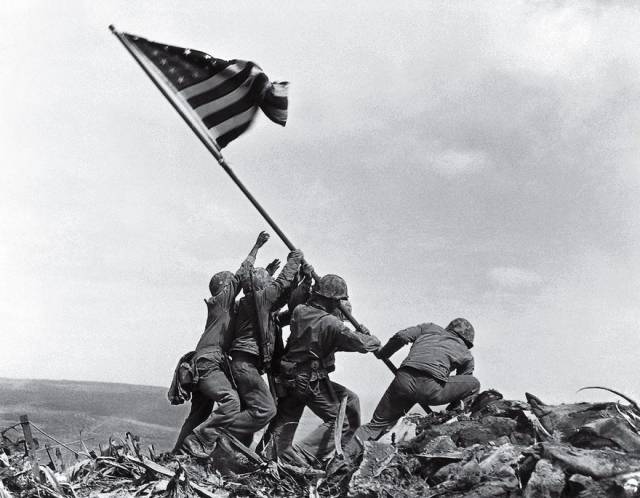Flag Raising On Iwo Jima, Joe Rosenthal, 1945 It is but a speck of an island 760 miles south of Tokyo, a volcanic pile that blocked the Allies’ march toward Japan. The Americans needed Iwo Jima as an air base, but the Japanese had dug in. U.S. troops landed on February 19, 1945, beginning a month of fighting that claimed the lives of 6,800 Americans and 21,000 Japanese. On the fifth day of battle, the Marines captured Mount Suribachi. An American flag was quickly raised, but a commander called for a bigger one, in part to inspire his men and demoralize his opponents. Associated Press photographer Joe Rosenthal lugged his bulky Speed Graphic camera to the top, and as five Marines and a Navy corpsman prepared to hoist the Stars and Stripes, Rosenthal stepped back to get a better frame—and almost missed the shot. “The sky was overcast,” he later wrote of what has become one of the most recognizable images of war. “The wind just whipped the flag out over the heads of the group, and at their feet the disrupted terrain and the broken stalks of the shrubbery exemplified the turbulence of war.” Two days later Rosenthal’s photo was splashed on front pages across the U.S., where it was quickly embraced as a symbol of unity in the long-fought war. The picture, which earned Rosenthal a Pulitzer Prize, so resonated that it was made into a postage stamp and cast as a 100-ton bronze memorial.
